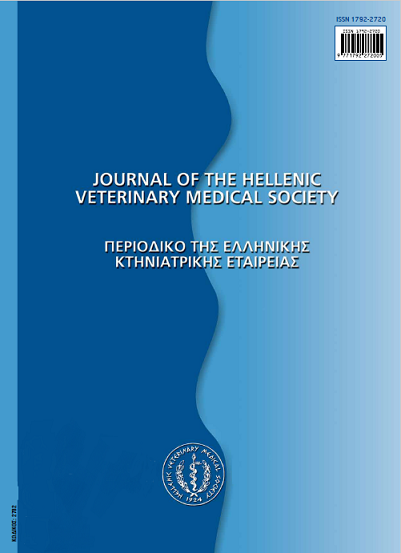Effective hands-on treatment of a corneal dermoid in a calf

Abstract
In the present report, an effective hands-on treatment for a corneal dermoid that extended to the third eyelid, in the left eye of a Japanese Black calf is described. Xylazine sedation and local infiltration anesthesia with 2% lidocaine on the upper and lower eyelids as well as the third eyelid, in combination with topical anesthesia was performed. A Weitlaner retractor allowed immobilizing the patient’s eyeball during surgery, and superficial lamellar keratectomy was performed to surgically excise the mass. A temporary tarsorrhaphy was placed in order to allow the surgical corneal wound to heal as well as to treat keratitis. After an uneventful postoperative recovery, complete cure 70 days post-operatively was achived. This hands-on method represents a practical and effective treatment for ocular dermoids in calves.
Article Details
- How to Cite
-
HATATE, K., SASAKI, J., KATAYAMA, M., SEKIGUCHI, S., & YAMAGISHI, N. (2018). Effective hands-on treatment of a corneal dermoid in a calf. Journal of the Hellenic Veterinary Medical Society, 69(1), 883–888. https://doi.org/10.12681/jhvms.16448
- Issue
- Vol. 69 No. 1 (2018)
- Section
- Case Report

This work is licensed under a Creative Commons Attribution-NonCommercial 4.0 International License.
Authors who publish with this journal agree to the following terms:
· Authors retain copyright and grant the journal right of first publication with the work simultaneously licensed under a Creative Commons Attribution Non-Commercial License that allows others to share the work with an acknowledgement of the work's authorship and initial publication in this journal.
· Authors are able to enter into separate, additional contractual arrangements for the non-exclusive distribution of the journal's published version of the work (e.g. post it to an institutional repository or publish it in a book), with an acknowledgement of its initial publication in this journal.
· Authors are permitted and encouraged to post their work online (preferably in institutional repositories or on their website) prior to and during the submission process, as it can lead to productive exchanges, as well as earlier and greater citation of published work.



